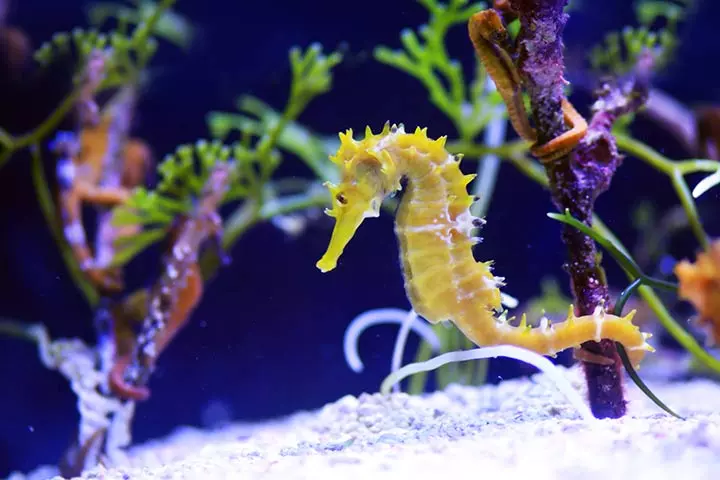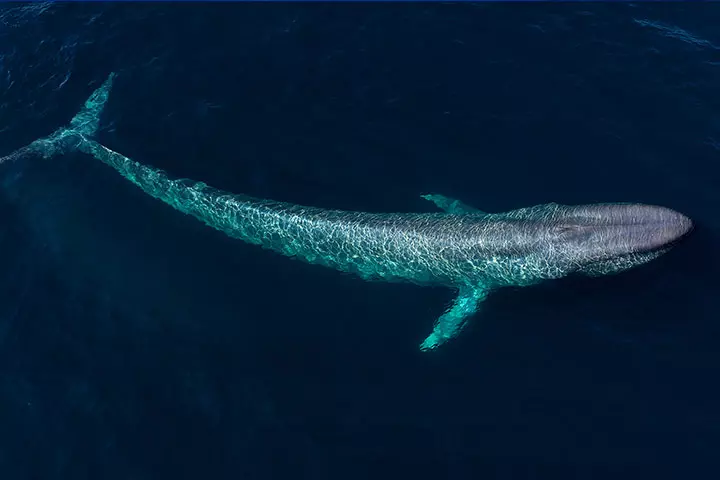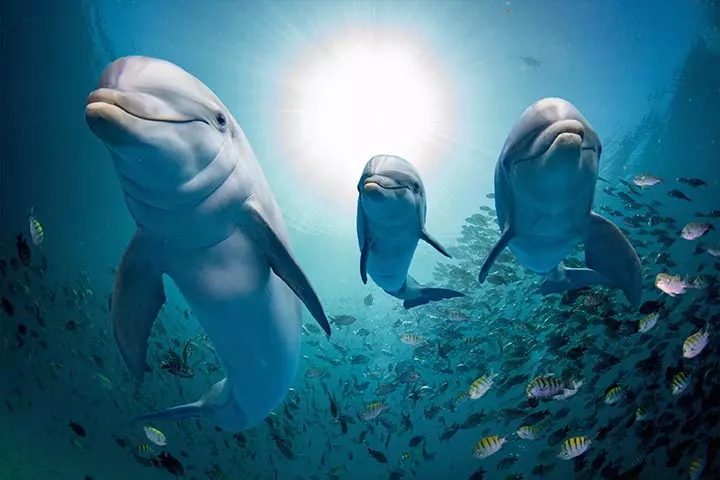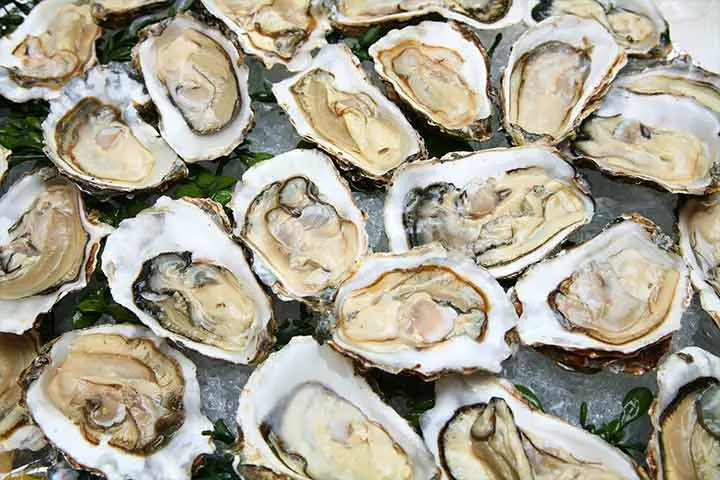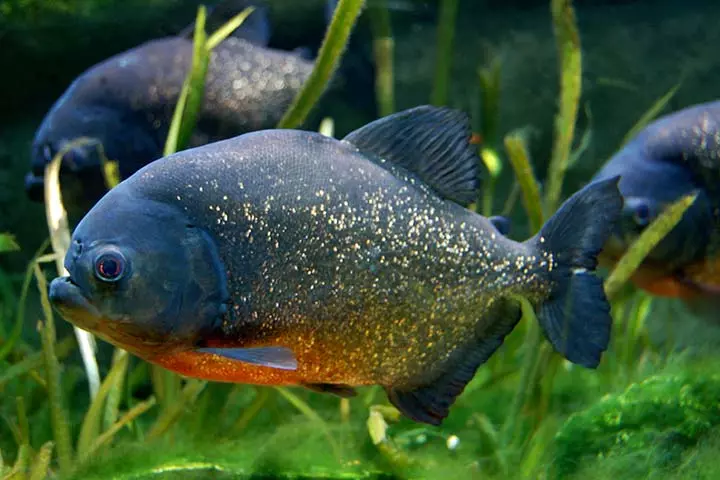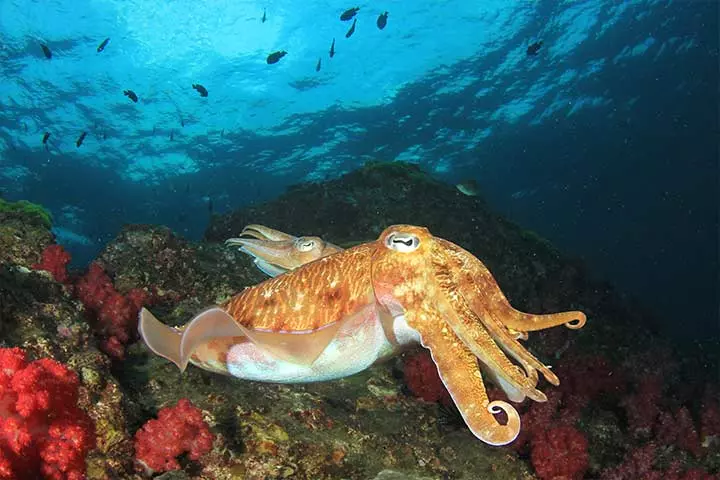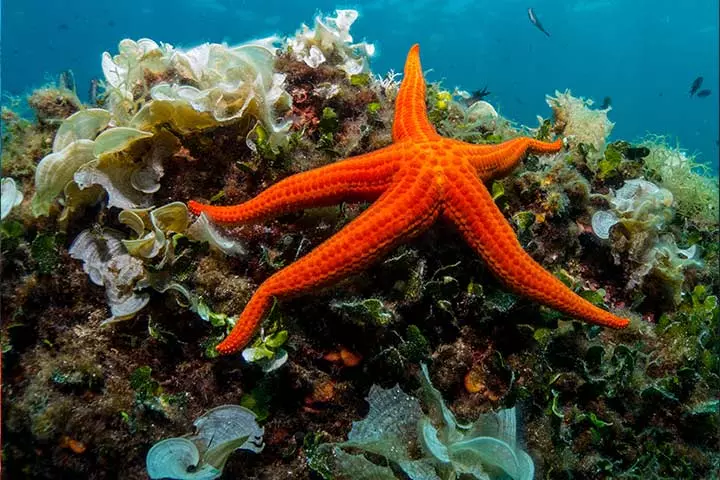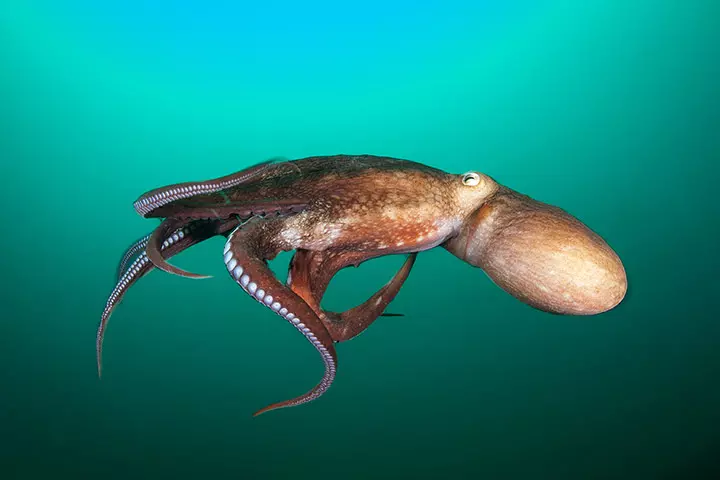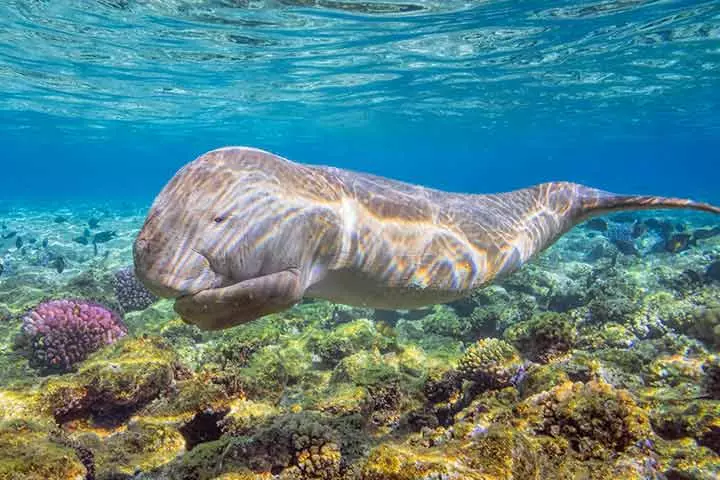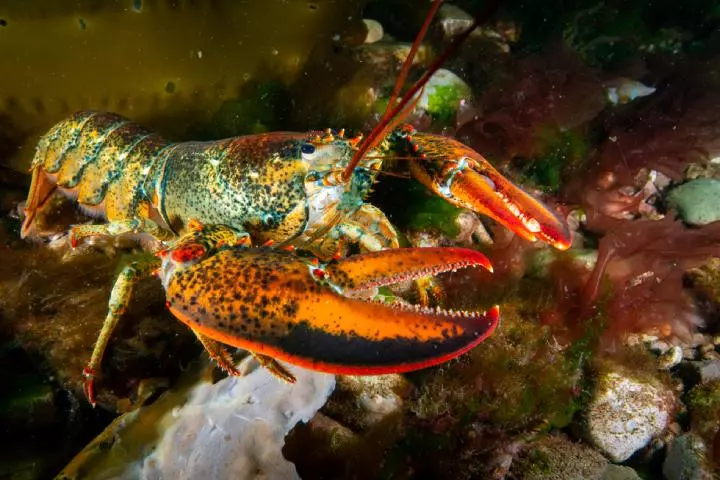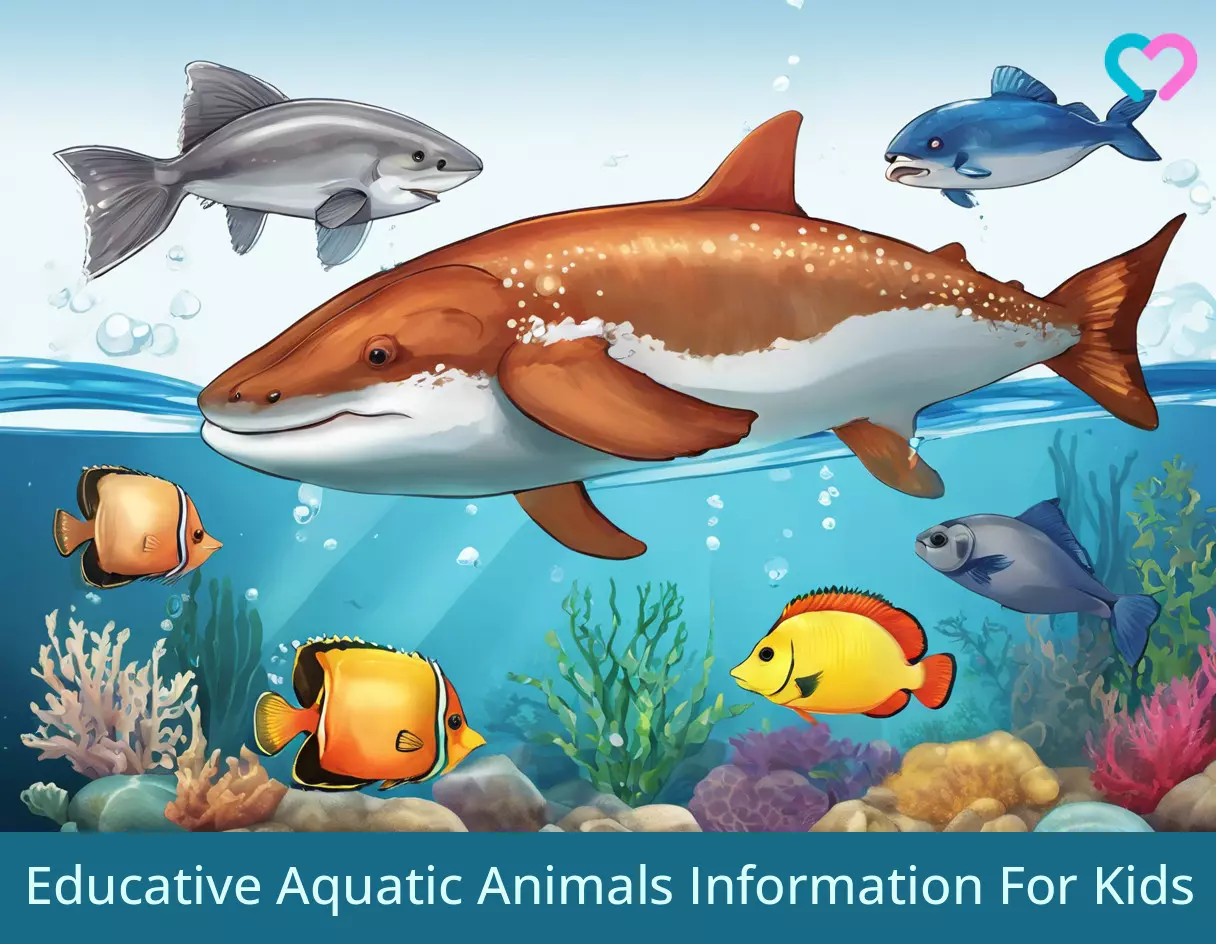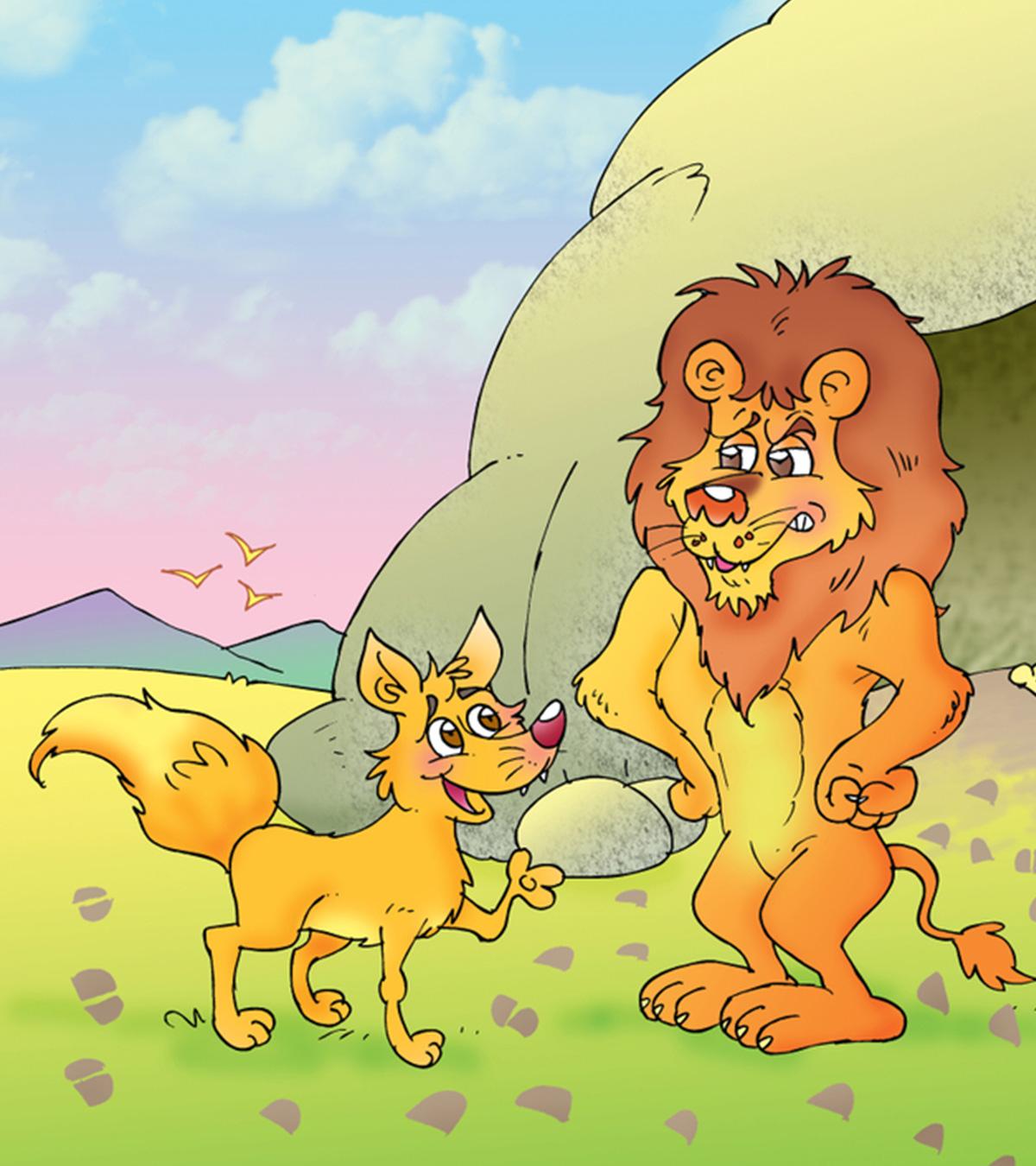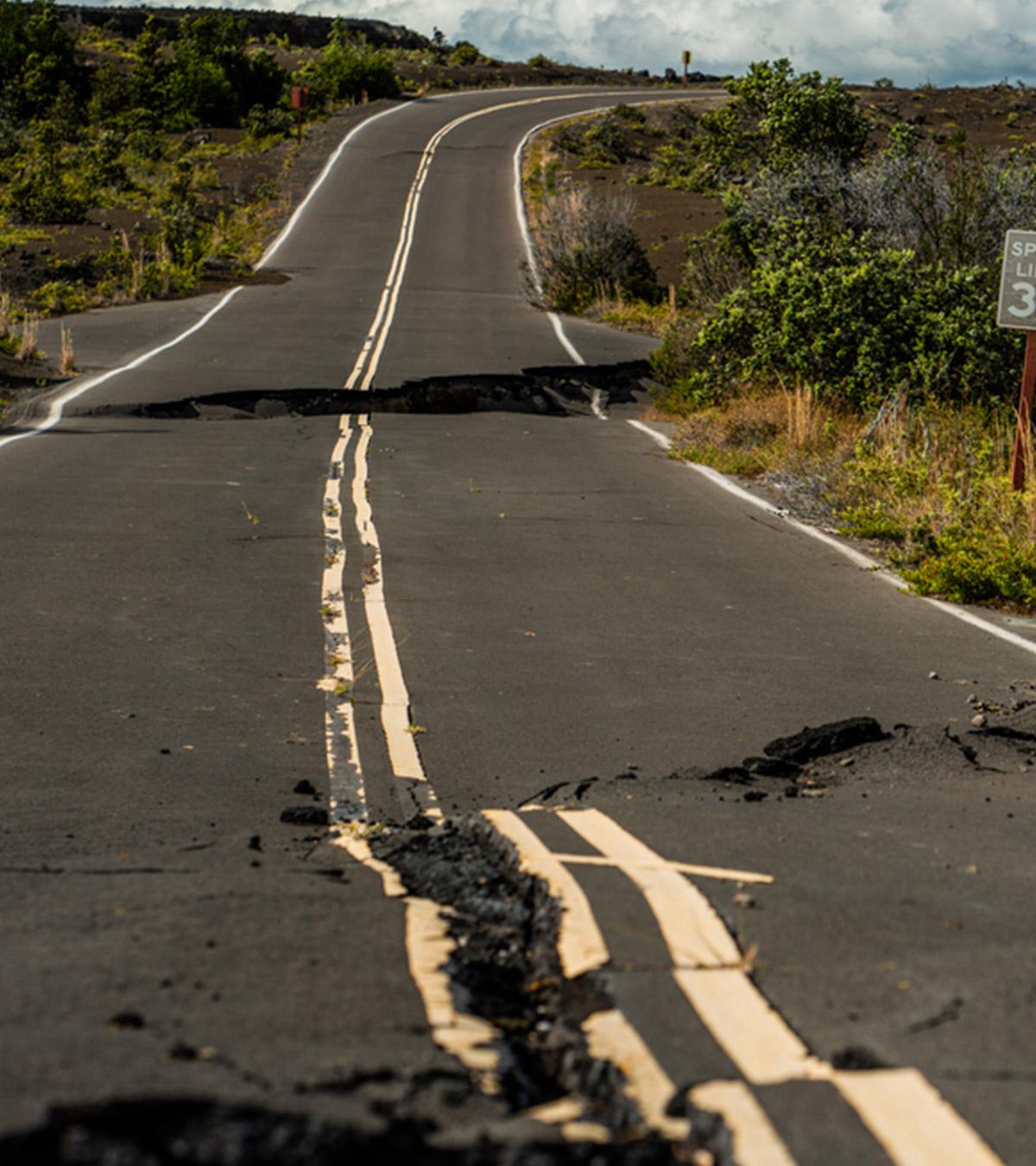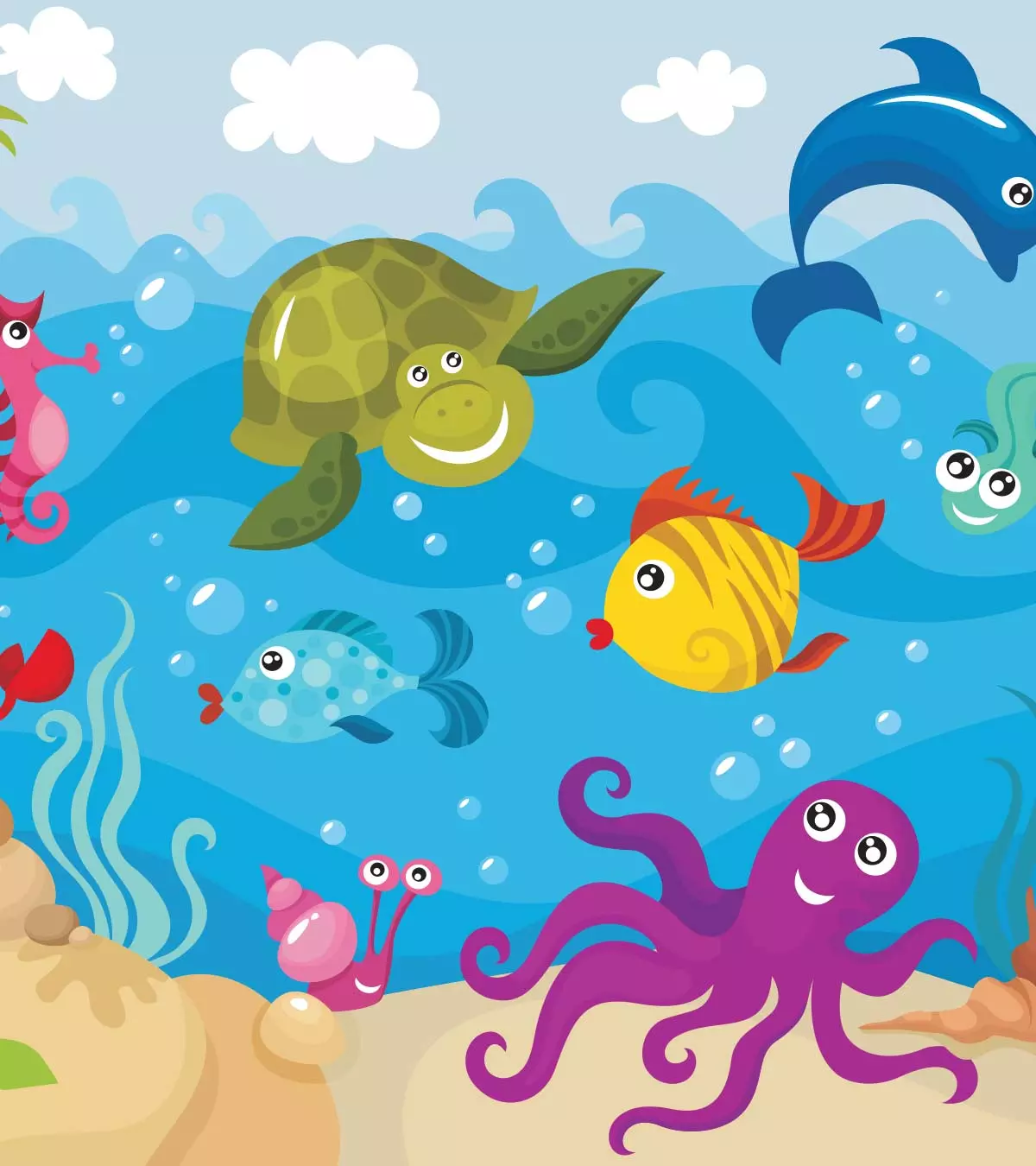
Image: ShutterStock
Did you know that 70% of the earth is covered in water? Imagine the number of creatures living in that space. Well, here’s some water animal information for kids that will leave them astonished. The never-ending water body is filled with various aquatic animals that are interesting, unique, and mysterious
. Although we have explored only five percent of the water bodies, we have already discovered around 230,000 species. So, if your child enjoys learning about marine animals, our list covers the detailed information and fun facts to keep them entertained. Read on to know more.
Key Pointers
- 70% of the Earth’s surface is water, and over 230,000 aquatic species have been discovered.
- Freshwater and marine animals exist, and sea turtles, dolphins, oysters, piranhas, and cuttlefish are examples of aquatic animals with unique characteristics.
- Aquatic animals breathe through lungs or gills and extract oxygen from water.
- Adaptation and socialization help aquatic animals survive, but pollution, habitat loss, and climate change pose dangers.
What Are Aquatic Animals?
Water or aquatic animals are either vertebrate or invertebrate animals, which live in the water all through or most of their lives. These animals breathe air through their lungs or gills by extracting the oxygen dissolved in the river, lake, or ocean water. These animals are essential for maintaining the balance of marine ecosystems by contributing to food webs and helping in nutrient cycling under water. They also provide numerous resources for human livelihoods.
Types Of Water Animals
Aquatic animals living in freshwater are called freshwater animals and those living in saltwater bodies such as the sea, oceans, etc., are called marine animals.
Varieties Of Aquatic Animals
1. Sea turtles
One of the most fascinating facts about sea turtles for kids is that they have been on earth far earlier than 220 million years and have survived extreme weather changes, which wiped out even the dinosaurs. The female sea turtles can return to the same beach that they were born in even after 30 years (1).
2. Octopuses
One of the few animals with blue blood, octopuses are considered the most intelligent of all the invertebrates. Scientific studies are increasingly confirming that they are sentient creaturesiCreatures that can feel, sense, and react to the environment with their emotions (2).
3. Seahorses
They are unique in a way that the male carries the babies, instead of the female. The female deposits her eggs in a pouch in the male. The mating ritual includes dancing and intertwining the tails. Pregnancy lasts for two to five weeks with just one percent of offspring surviving to reach adulthood (3).
4. Blue whales
They are the largest animals and have evolved from the hippopotamus. They are an endangered species with just 4,500 left on the planet. They can swim up to five miles an hour, but on sensing danger, they can speed up to 30 miles an hour. One of the most fun whale facts for kids is that blue whales can sleep while swimming with half their brain functioning.
The graph below represents how the population of these gigantic sea animals have dwindled over the years. It shows that the population size of the mature Atlantic blue whale (Balaenoptera musculus intermedia) sharply declined from 1960 to 2000 and has marginally risen by the year 2020.
Decreasing numbers of Antarctic blue whales (Balaenoptera musculus intermedia)
Source: Blue Whales Blue Whales (Balaenoptera musculusI); IUCN Red List5. Dolphins
They are beautiful, intelligent, and friendly aquatic animals and are the only mammals born tail first. A unique dolphin fact for kids is that they take care of and nurture old or hurt members in a group, and the young ones live with their mothers until they are three years old.
 Did you know?
Did you know?6. Electric eels
They belong to the knife fish family and are one of the 500 fishes that can produce electricity. The skin of the eel insulates it from its electric attack, but if the eel is wounded it could shock itself. The electric shock of an eel is powerful enough to knock down a horse and can prove fatal to a human. Some eels produce enough electricity to light ten bulbs!
7. Jellyfish
They are one of the oldest aquatic organisms and came into existence even before the dinosaurs. They have been around for 500 to 700 million years. Some species possess light-sensitive organs and can glow in the dark. One of the most interesting facts about jellyfish for kids is that does not have bones, brain, heart, and head (4).
8. Oysters
They can change genders depending on the mating situation. They can also change back to their original genders (5).
9. Great white shark
It is one of the most well-known species of aquatic animals and the largest predators in the oceans. Sharks may attack humans, but they don’t eat them as humans lack fat. Great Whites in South Africa are famous for their majestic jumps from water. Male sharks mature when they turn ten while females mature when they turn 15. Females give birth to two to ten sharks after a year of pregnancy. A surprising shark fact for kids is that baby sharks care for themselves from the moment they are born; parent sharks don’t exhibit parental care (6).
10. Piranha
It means fish tooth, and they possess powerful jaw bones and pointed sharp teeth. They have extremely sensitive organs that help them detect blood in oceans just like the sharks. Piranhas are not only omnivorous but also cannibals, with an insatiable appetite for blood.
11. Cuttlefish
It is a slow swimmer, and swims by emitting out a large quantity of water from its mantle. The phenomenon is known as jet propulsion, and it aids cuttlefish in escaping predators. They also release ink to escape from sharks and large fishes. Cuttlefish was widely used as a source of ink in ancient times (7).
12. Walrus
Being mammals, can easily stay underwater for 30 minutes without having to come to the surface to breathe. They are incredibly protective of one another and would rush to help any walrus under attack.
 Quick fact
Quick fact13. Starfish
They can change their gender at any time, reproduce sexually or asexually, and in sexual reproduction, the females produce millions of eggs. Though most starfish have only five arms, some could have about 20 to 40 arms as well. They can regenerate a body part within a year (8).
14. Giant squids
They are one of the most mysterious animals and live at depths of 2000 to 3000 feet in the oceans. Information on giant squids depends entirely on the carcassesiThe remains of a dead animal found at beaches. They don’t hunt predators but ambush them. Some produce luminescent inksiInk with a type of pigment that absorbs the fallen light and re-emits it at another wavelength to escape predators.
15. Dugong
It is popular as ‘sea cow’ and is one of the few vegetarian aquatic mammals. They survive only on seagrass and can consume about 88 pounds of seaweed every day. They are a vulnerable species that need protection and are put up in various sanctuaries across the world (9).
16. Lobsters
Image: Shutterstock
Lobsters are crustaceans found in coastal waters worldwide, preferring cold and salty ocean environments (10). Residing on the ocean floor, they primarily consume fresh food, such as fish, clams, crabs, sea urchins, mussels, and occasionally other lobsters (11). Lobster blood, typically grayish or clear, circulates through large vessels by a heart located just behind the stomach (12).
17. Narwhals
Image: Shutterstock
The narwhal, categorized as a toothed whale, stands apart from its counterparts with no teeth in its mouth. Rather distinctively, male narwhals possess a single long, straight tooth (or tusk) that extends two to three meters from their upper left jaw. These marine mammals primarily feed on Greenland halibut, Arctic and polar cod, squid, and shrimp. Narwhals feature a distinctive black-and-white mottled skin pattern, with their undersides being white.
How Do Water Animals Breathe?
How do aquatic animals breathe underwater and what if there were no oxygen to breathe?
A few large or very small animals living in moist environments breathe through the skin. The exchange of gasses takes place through the skin and is called an integumentary exchange. Animals living in water have gills, which are extensions of their outer membranes and contain very thin cells designed to allow gas exchange as the water passes through them.
What Do Aquatic Animals Eat?
Aquatic Animals eat a variety of foods. Animals like corals, sponges, and whales eat small crustaceans called plankton. Ocean fishes have different feeding habits. Usually, most ocean fishes eat each other and eat crustaceans like shrimp, crabs, and krill. They also feed on algae, kelp, plankton, detritus, and cephalopods like octopus and squid, besides echinodermsiA class of marine, invertebrate creatures having spiny bodies like sea urchins. A few ocean fishes are scavengers that feed on the carcasses of other marine mammals or animals.
Which Ocean Animals Eat Plants?
Most marine animals are carnivores, but a few, such as sea turtles, manatees, and dugongs, feed on underwater sea plants. Marine fishes such as marbled parrotfish are primarily herbivorous. They graze on algae and seagrass in nearshore waters. Other species like surgeonfish and pinfish directly feed on seagrasses.
How Do Aquatic Animals Survive In The Ocean?
Marine organisms have adapted to diverse habitats and environmental conditions in oceans. They have made several physiological, behavioral, and structural adaptations for survival. Morphological or structural adaptations were made to suit and survive in a particular habitat. Physiological adaptations made by sea creatures are more related to the way their body metabolism works. Aquatic animals have learnt several behavioral adaptations to survive and escape from predators.
Potential Threat To Water Animals
Due to the fragility of the environments in which they live, conservationists often have a special concern for aquatic animals. Aquatic animals are prone to pressures like destructive fishing, overfishing, climate change, and marine pollution from land and air. Harsh chemicals, which pollute water, show devastating effects on marine species, making conservation efforts crucial for preserving oceanic biodiversity and beauty. Many national and international organizations, like the Ocean Conservancy and WWF (World Wide Fund for Nature), are working incessantly to protect aquatic animals and marine habitats.
22 Aquatic Animals Information And Facts For Children
- Dolphins are so clever that they sleep with one eye open and half their brain awake, to keep a watch on predators and threats.
- The blue whales call at 188 decibels, which is the largest sound produced by any animal on earth.
- Turtles probably do not like Antarctica. Except there, they live on every other continent.
- Sea sponges live without head, eyes, mouth, bones, feelers, lungs, heart, or brain.
- The heart of a shrimp is located in its head.
- Catfish have a big swimming tongue with nearly 100,000 individual taste buds all through the body and are as good as a big tongue swimming in the ocean.
- The loggerhead turtle’s head keeps growing bigger as it gets older.
- Great white sharks can consume a sea lion in a single meal.
- Sperm whales are the only predators of the giant squid.
- Even though dolphins have 100 teeth, they swallow their prey in a single piece without chewing.
- Leatherback turtles can travel 12,000 miles efficiently.
- About a 100 humans can fit inside the mouth of a blue whale. But this humble creature eats only small fishes.
- Moray eels keep opening and closing their mouths as a part of respiration. They are just breathing.
- The male barnacle must use a really long reproductive part to meet its mate.
- Pompeii worms live on volcanic vents located 2,500 meters below the surface of oceans. They die if brought to the surface.
- Anguilla eels can leave water and slither on land for a short period of time.
- Crabs’ teeth are located in their stomachs.
- Seahorses utter muscular sounds at the time of mating.
- Sailfish use their sail to look bright and intimidating when they are frightened.
- Dugongs are related to elephants.
- Sea stars live on the seafloor. They are the only animals with feet on their arms.
- Octopuses have three hearts and blue blood.
Frequently Asked Questions
1. How should I introduce aquatic animals to children?
You may introduce aquatic animals to children using these strategies
- Read a book on aquatic animals and discuss it.
- Help them make aquatic-animal crafts.
- Help them create an interesting and informative aquatic animal fact book.
- Play interactive games based on aquatic animals.
- Let them watch videos and documentaries on aquatic animals.
- Use flash cards with pictures of aquatic animals for memory games.
2. Which is the fastest sea animal?
The fastest sea animal is the sailfish (13).
3. What do water animals drink?
Water animals do drink water but not in the same way as land animals. Since they live in water, they absorb water through their gills or extract water from their food. Their bodies are adapted to extract the necessary hydration from their aquatic habitats.
4. Do water animals feel pain?
Fish also feel pain like other living beings. They may not scream or express their pain vocally, but when hit by a hook, they do show signs of suffering, indicating their pain.
5. Can underwater animals cry?
Underwater animals, such as fish and other marine creatures, do not cry like humans do. Crying requires the cerebral cortex, which enables other animals to shed tears. This cerebral cortex is missing in water animals.
6. Which water animal never gets old and can live forever?
There are no such species that can live forever. Even though some water animals, such as jellyfish and freshwater hydra, can regenerate their cells, they eventually age and die. Regeneration of cells does not keep them from eventually aging and death.
7. Which is the slowest swimming animal in the ocean?
The slowest swimming animal in the ocean is the dwarf seahorse. Their small size and unique body structure make them move through the water leisurely. Also, they rely on their dorsal fin to propel themselves forward, which limits their speed.
8. Which is the smallest animal in the ocean?
Zooplankton is considered the smallest animal in the ocean. These microscopic organisms can range in size from a few micrometers to a few hundred micrometers in diameter (16).
9. What was the first water animal on Earth?
According to research, sea sponges are believed to be the first animals on planet Earth. Researchers have confirmed that a strange chemical discovered in rocks that are 640 million years old is a product of marine sponges.
10. How do otters stay warm in cold water?
Otters possess thick, water-repellent fur that provides insulation, holding air close to their bodies and keeping them dry. Otters also produce high metabolic heat from their muscles, which keeps them warm. Otters can regulate their body temperature in frigid aquatic conditions because of these traits (17).
The creatures, animals, plants, and different life forms under the water never cease to amaze us. The water bodies hold many more secrets that are yet to be discovered. Therefore, this compilation of water animal information for kids can be the start of your child’s never-ending fascination with the marine ecosystem. Enlighten them about the amazing water animals, whether it’s amphibians, reptiles, or mammals, and their unique features and abilities, and pique their interest with these fascinating facts and information. Soon you will see your children getting drawn to these animals, wanting to know more and more about them.
Infographic: How You Can Protect Marine Animals
The beauty of marine life is slowly fading away due to the harmful practices of humans. So, now that your child is enlightened about the fascinating life of the water animals, encourage them to protect them by sharing this infographic on practical steps to save marine life. Illustration: Momjunction Design Team
Illustration: Educative Aquatic Animals Information For Kids
Image: Stable Diffusion/MomJunction Design Team
Watch this video to learn 10 incredible facts about aquatic animals. From the biggest to the smallest, you won’t believe what you’ll discover!
References
- Sea Turtles.
https://www.fisheries.noaa.gov/sea-turtles - Octopus.
https://www.onekindplanet.org/animal/octopus/ - Seahorse.
https://www.onekindplanet.org/animal/seahorse/ - What are jellyfish made of?.
https://oceanservice.noaa.gov/facts/jellyfish.html - Fun Facts.
https://oysterrecovery.org/oysters-101/fun-facts/ - White Shark Information.
https://wildlife.ca.gov/Conservation/Marine/White-Shark - Cuttlefish (Seppia spp.).
https://www.dpi.nsw.gov.au/content/fisheries/recreational/saltwater/sw-species/cuttlefish - Giant Squid, Architeuthis dux.
https://ocean.si.edu/ocean-life/invertebrates/giant-squid - Dugong (Sea Cow).
https://www.qm.qld.gov.au/Explore/Find+out+about/Animals+of+Queensland/Mammals/Queenslands+vanishing+wildlife/Dugong+Sea+Cow#.VzR1GNJ97IU - Questions from Kids About Lobsters & Lobstering
https://umaine.edu/lobsterinstitute/educational-resources/lobsters/ - Fun Facts About Luscious Lobsters
https://www.fisheries.noaa.gov/national/outreach-and-education/fun-facts-about-luscious-lobsters - Anatomy and Biology
https://umaine.edu/lobsterinstitute/educational-resources/anatomy-biology/ - The fastest animals in the world!
https://animalsmart.org/kids’-zone/the-fastest-animals! - What is a group of dolphins called?
https://uk.whales.org/whales-dolphins/what-is-a-group-of-dolphins-called/ - Natural History
https://www.biologicaldiversity.org/species/mammals/Pacific_walrus/natural_history.html - What Are the Smallest Animals in the Ocean?
https://oceanconservancy.org/blog/2021/04/02/smallest-animals-ocean/ - The secret to a hotter otter.
https://www.montereybayaquarium.org/stories/hotter-otters
Community Experiences
Join the conversation and become a part of our nurturing community! Share your stories, experiences, and insights to connect with fellow parents.
Read full bio of Elisa Yi
Read full bio of Sagari Gongala
Read full bio of Harshita Makvana
Read full bio of Praggya Joshi







